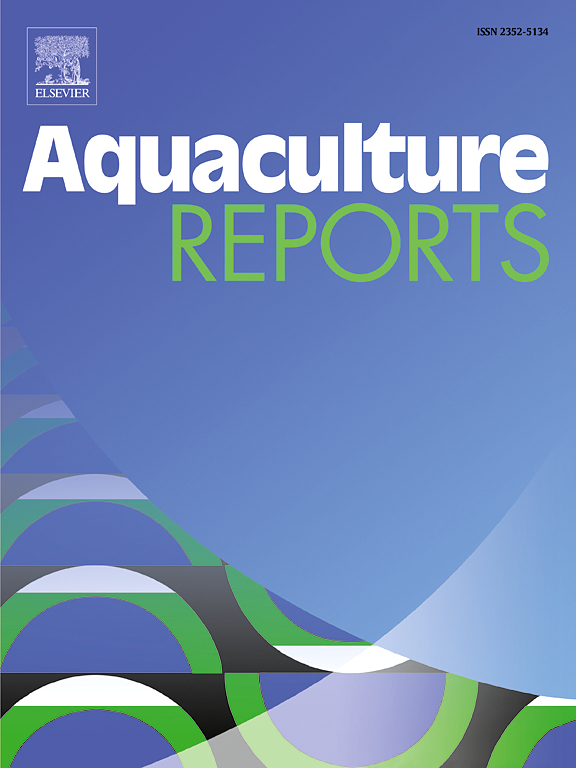First record of non-native polychaetes Polydora websteri and P. caeca invading cultured and wild populations of mussels and oysters in the Mediterranean
IF 3.2
2区 农林科学
Q1 FISHERIES
引用次数: 0
Abstract
Species of Polydora and related genera are well known molluscs’ pests transported by aquaculture activities and invading new locations worldwide. Their correct identification often requires confirmation by molecular data due to the presence of cryptic species. In the present study, using morphological and molecular data, we identified three non-native Polydora species associated with cultured and wild mussel Mytilus galloprovincialis, Pacific oyster Magallana gigas and European oyster Ostrea edulis in the Adriatic Sea (Italy). The tube-dwelling P. cornuta has been recorded from the Mediterranean since 1990 and is currently classified as one of the worst invaders in soft bottom communities in the region. The shell-boring P. caeca and P. websteri are here reported for the first time in the Mediterranean. This occurrence is a cause for concern, as the regular transfer of molluscs between aquaculture facilities within the Mediterranean basin and with European farms outside the basin may contribute to the further spread of the non-native Polydora in this region. The origin and distribution of these species in the Mediterranean should be further studied.
非本地多毛菌Polydora websteri和P. caeca入侵地中海养殖和野生贻贝和牡蛎种群的第一个记录
Polydora 和相关属的物种是众所周知的软体动物害虫,由水产养殖活动传播并入侵世界各地的新地点。由于存在隐性物种,它们的正确识别往往需要分子数据的确认。在本研究中,我们利用形态学和分子数据,确定了与亚得里亚海(意大利)养殖和野生贻贝、太平洋牡蛎和欧洲牡蛎相关的三个非本地 Polydora 物种。自 1990 年以来,地中海就有管栖玉米贻贝的记录,目前被列为该地区软底生物群落中最严重的入侵者之一。这里首次报告了地中海地区的贝壳蛀虫 P. caeca 和 P. websteri。这种情况令人担忧,因为软体动物在地中海盆地内的水产养殖设施之间以及与盆地外的欧洲养殖场之间的定期转移可能会导致非本地 Polydora 在该地区的进一步传播。应进一步研究这些物种在地中海的起源和分布。
本文章由计算机程序翻译,如有差异,请以英文原文为准。
求助全文
约1分钟内获得全文
求助全文
来源期刊

Aquaculture Reports
Agricultural and Biological Sciences-Animal Science and Zoology
CiteScore
5.90
自引率
8.10%
发文量
469
审稿时长
77 days
期刊介绍:
Aquaculture Reports will publish original research papers and reviews documenting outstanding science with a regional context and focus, answering the need for high quality information on novel species, systems and regions in emerging areas of aquaculture research and development, such as integrated multi-trophic aquaculture, urban aquaculture, ornamental, unfed aquaculture, offshore aquaculture and others. Papers having industry research as priority and encompassing product development research or current industry practice are encouraged.
 求助内容:
求助内容: 应助结果提醒方式:
应助结果提醒方式:


